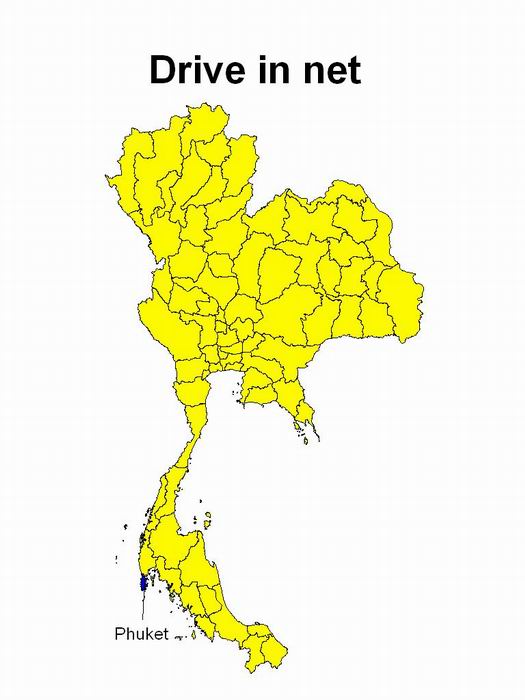DRIVE
IN NET
It
was originally a tradition gear from Okinawa where it is
called muro-ami. In 1951, some Thai fishermen learnt the
technique from their Japanese colleagues operating in Southeast
Asians waters, and began using the gear by fishermen in Samut
Prakarn, Chonburi and Phuket. The results, however, were
disappointing, particularly in the Gulf. Eventually, only
one set of drive in net has remained in operation, at Ravai
fishing village at Phuket. The gear is still known as “Japanese
net” (Uan Yee Poon). It is used for catching yellowtail
fusiliers which the Thais call “Japanese fishes” (Pla
Yee Poon)
FISHING GEAR AND METHODS
Drive
in net
The
gear consists of a bag-net and two wings. The bag-net
is 26.5 m long and has an opening of 18.2 x 6.8 m. The
materials are nylon, and polyethylene at the cod-end and
the front flap. The wings are 140 m long rectangular
polyethylene nets, 50 mm mesh-size.
The
fishing operation is carried out by 20-25 men, using one
mother boat and four long-tail boats. The net is set
at the sea bottom, the mouth of the bag-net facing the current. The
fish are driven into the net by 8-10 fishermen who swim around
and shake a rope to which iron rings and palm leaves are
attached at 1.5 m intervals, and another six men who dive
to the bottom and hit iron rings against rocks. The
divers breath through pipes connected to a compressor on
board the fishing boat.
This
method of fishing is suitable for rocky bottom areas around
islands, in water depth from 5 to 20 meters. Fishing
can be done outside the monsoon season, when the sea is calm. In
the Andaman Sea this happens between November and April. The
best fishing time of the month is during neap tide.

|